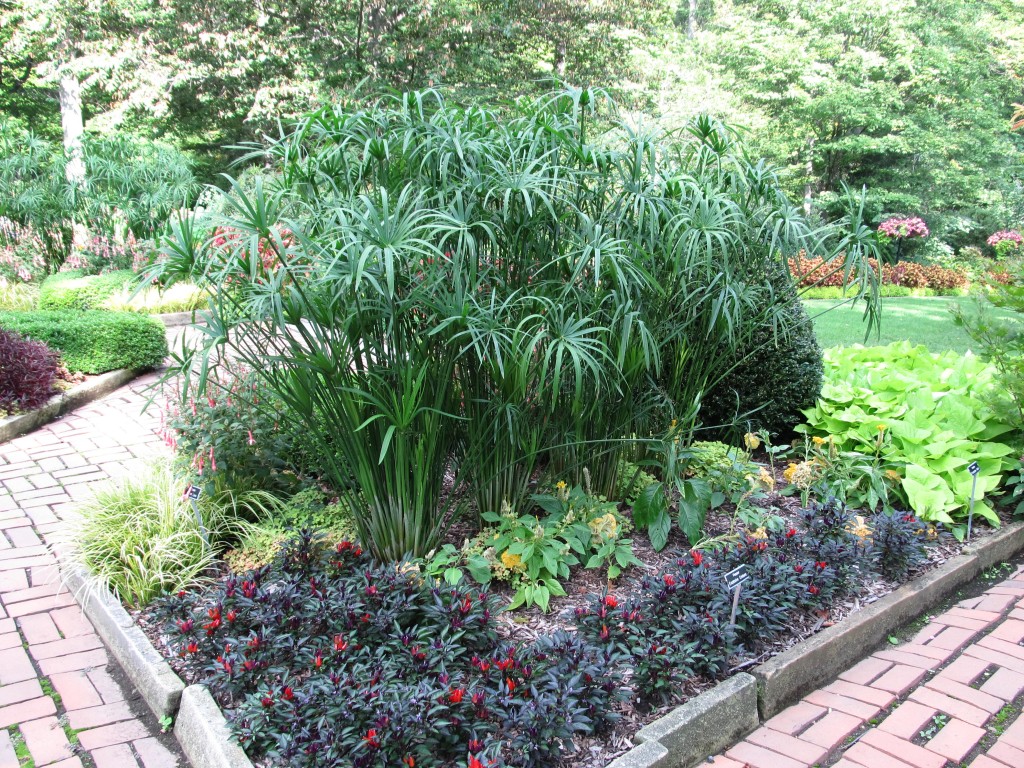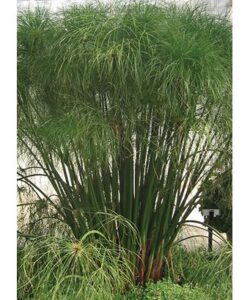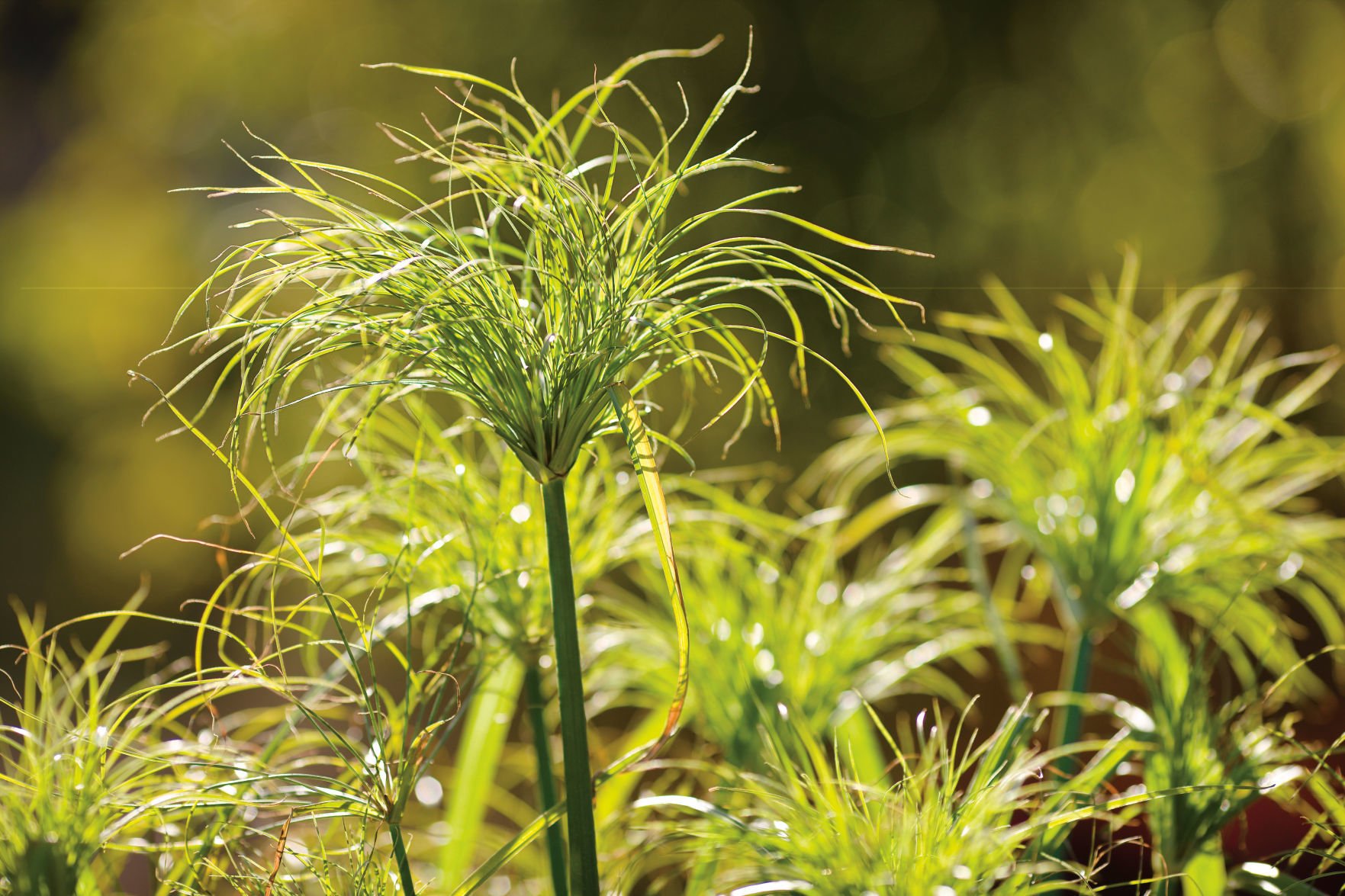

Spring outdoor finish: Do not move outside until after last frost. May need to repeat fungicide drench if soil-borne disease occurs. Pests/Diseases: Use general pest and disease practices. Pinching/PGRs: No pinching or plant growth regulators needed. Planting/Timing: Spring to summer sales, standard PPP Production Quick Facts From Proven Winners There were no disease issues with this plant. Pests/Diseases: Due to the water requirements of ‘Prince Tut,’ scout for fungus gnats. Planting/Scheduling: 4- to 5-inch quart pots (4 to 6 weeks), 6-inch and gallon pots (6 to 8 weeks) Plants can go down to the mid 50s for finishing. Temperatures: For growing on, temperatures should be mid 60s and warmer. Do not allow the plants to dry down past a 2. Water to 4 or 5 on the watering scale and allow to dry down to a 3. Any standard growing medium will work fine. Growing Media: ‘Prince Tut’ will grow in most soils and tolerate poor soil conditions (heavy, wet, pond edges, etc.).
#Overwinter king tut papyrus in zone 5 full#
The plants do well with natural light from partial shade to full sun. Lighting: Artificial lighting is not needed. Plant Growth Regulators: These are generally not needed, but to control height or to “miniaturize” for smaller pots use a paclobutrazol drench at 1 ppm. Available as rooted liners via Proven Winners only. ‘Prince Tut’ tolerates a wide pH range of 6 to 6.5 and a soil EC of 0.6 to 0.9 (2:1 method). Goyette’s Recommendations For ‘Prince Tut’ Grass:įertilizer: Use any full package general use liquid fertilizer at 150 ppm nitrogen constant to match your operation’s water quality. Goyette says he has grown it under heavy shade, and it has performed well. It is a compact, sturdier version of ‘King Tut’ Cyperus grass that handles light frost in the fall and is super easy to produce from rooted liners. Goyette says ‘Prince Tut’ is an iconic plant with a tropical feel that stood out in trials. Greenhouse Grower magazine named Mike Goyette as a finalist for its 2016 Head Grower of the Year program and winner of its Excellence in Quality award. Note that when growing plants in outdoor containers and baskets, they may require more frequent waterings than they would in the yard or garden.Growing Tips From Mike Goyette of Pleasant View Gardens It is even sizeable enough that it can be grown alone in a suitable container. With its upright habit of growth, it is best suited for use as a 'thriller' in the 'spiller-thriller-filler' container combination plant it near the center of the pot, surrounded by smaller plants and those that spill over the edges. King Tut Egyptian Papyrus is a fine choice for the garden, but it is also a good selection for planting in outdoor pots and containers. It can be propagated by division however, as a cultivated variety, be aware that it may be subject to certain restrictions or prohibitions on propagation.

This is a selected variety of a species not originally from North America.

It is somewhat tolerant of urban pollution. It is not particular as to soil type or pH. It prefers to grow in moist to wet soil, and will even tolerate some standing water. This plant does best in full sun to partial shade. Be careful not to disturb the crown in late winter when it may not be readily seen! As an herbaceous perennial, this plant will usually die back to the crown each winter, and will regrow from the base each spring. It grows at a fast rate, and under ideal conditions can be expected to live for approximately 10 years. It tends to be leggy, with a typical clearance of 1 foot from the ground, and should be underplanted with lower-growing perennials. King Tut Egyptian Papyrus will grow to be about 6 feet tall at maturity, with a spread of 4 feet. King Tut Egyptian Papyrus is recommended for the following landscape applications It has no significant negative characteristics. I am in zone eight and over winter some in the deep part of my pond and others in a baby s pool in thw garage Hightider. It's a very fast grower and it can be grown as an annual or brought in over the winter. This is a relatively low maintenance plant, and is best cleaned up in early spring before it resumes active growth for the season. If it's truly papyrus, it's spelled Cyperus papyrus. Its relatively fine texture sets it apart from other garden plants with less refined foliage. King Tut Egyptian Papyrus is an herbaceous perennial with an upright spreading habit of growth. King Tut Egyptian Papyrus' attractive grassy leaves remain green in color throughout the season on a plant with an upright spreading habit of growth. This variety is a large semi-aquatic, grass-like plant producing long green stems with green bracts perfect for pond side planting or in moist gardens doesn't mind being submerged a few inches


 0 kommentar(er)
0 kommentar(er)
